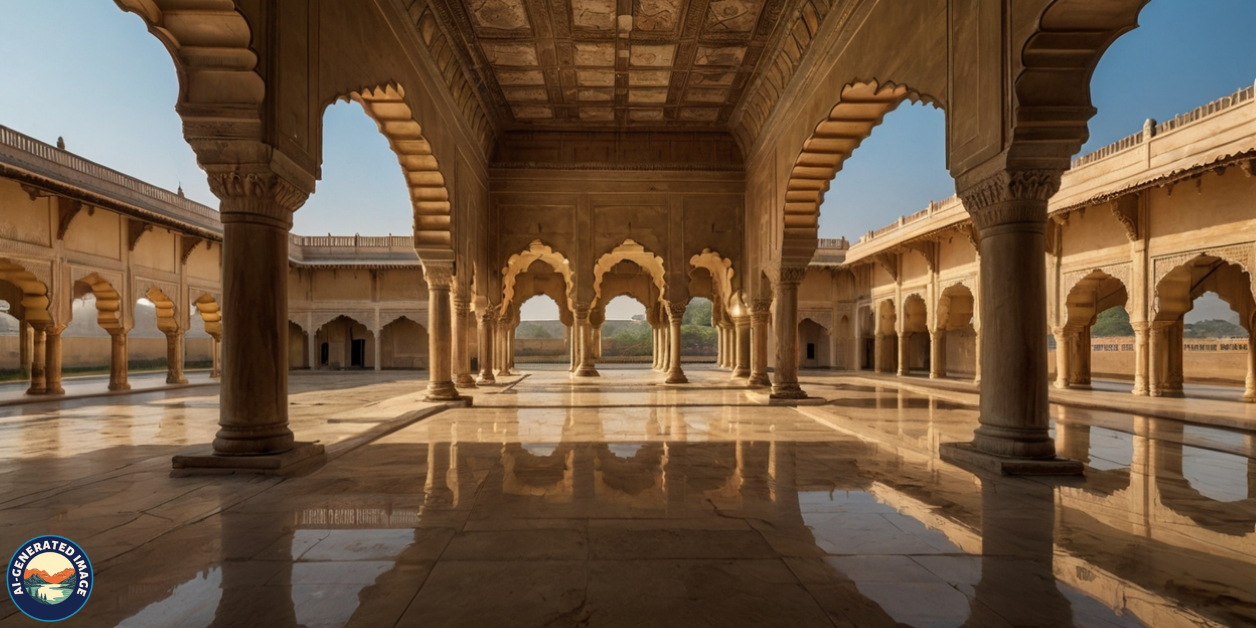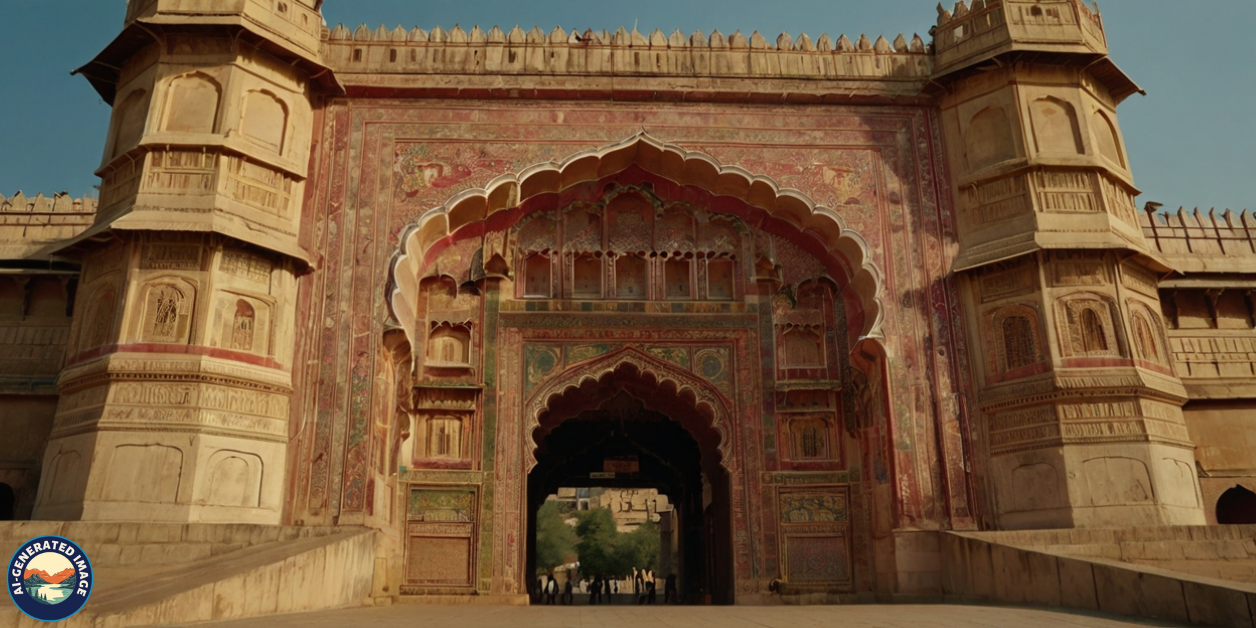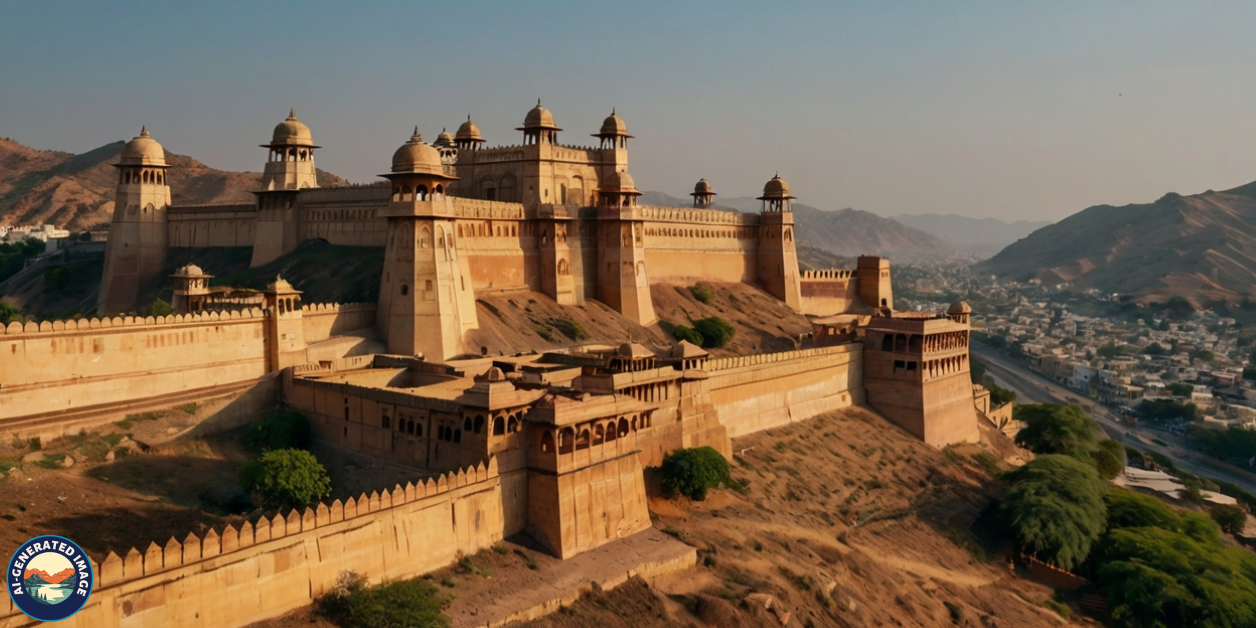Introduction
Amber Fort, also known as Amer Fort, is one of India’s most celebrated architectural masterpieces. Perched majestically on a hilltop overlooking Maota Lake, it stands as a testament to the opulence and grandeur of the Rajput era. Nestled just 11 kilometers from Jaipur, Amber Fort is a UNESCO World Heritage Site and a must-visit destination for anyone exploring Rajasthan.
The Rich History
The history of Amber Fort dates back to the late 16th century, when it was constructed by Raja Man Singh I, one of the trusted generals of Emperor Akbar. The fort, which was later expanded by successive rulers, became the stronghold of the Kachwaha Dynasty. Amber, the original capital of the Kachwahas, was chosen for its strategic location and natural defenses provided by the surrounding hills.
Amber Fort’s long-standing history is deeply entwined with Rajasthan’s royal lineage, reflecting the valor and grandeur of the Rajput rulers.
Architectural Brilliance
One of the most striking aspects of Amber Fort is its brilliant architectural design. The fort showcases a unique blend of Rajput and Mughal architecture, with intricate carvings, grand palaces, and majestic courtyards. Constructed using red sandstone and white marble, it stands out for its artistic elegance and structural prowess.
The fort’s layout includes towering gates, royal courtyards, and intricately designed palaces that reflect the sophisticated tastes of the rulers. The Indo-Islamic style is evident in the fort’s design, with floral patterns, delicate frescoes, and exquisite arches decorating the interiors.
Key Attractions
Sheesh Mahal (Mirror Palace)
One of the most captivating parts of Amber Fort is the Sheesh Mahal or the Mirror Palace. This palace is adorned with thousands of tiny mirrors, which are said to shimmer even with the light of a single candle. The mirrors, sourced from Belgium, were intricately designed to create stunning reflections, making Sheesh Mahal an epitome of Rajput craftsmanship.

Diwan-e-Aam (Hall of Public Audience)
The Diwan-e-Aam, or the Hall of Public Audience, was used by the rulers to address the common people and hear their grievances. This grand hall features a blend of Mughal and Rajput designs, with elaborately carved pillars and a spacious layout that could accommodate large gatherings.

Diwan-e-Khas (Hall of Private Audience)
In contrast to the public audience hall, Diwan-e-Khas was reserved for private meetings with royal dignitaries and special guests. The hall is more intimate and adorned with precious stones, making it a symbol of royal privilege.

Sukh Niwas (Hall of Pleasure)
A fascinating feature of Amber Fort is Sukh Niwas, or the Hall of Pleasure. This chamber was designed with a unique cooling system, where water was channeled through the walls to maintain a cool temperature during the hot summers of Rajasthan. This innovative design showcases the advanced engineering skills of the time.

Ganesh Pol (Ganesh Gate)
Ganesh Pol, the main entryway to the private palaces of the kings, is an iconic structure within Amber Fort. The gate is named after Lord Ganesha, the elephant-headed god of wisdom and success, and features vibrant frescoes that represent the religious significance of this entrance.

The Maota Lake and its Surroundings
The scenic Maota Lake, located at the base of Amber Fort, adds to the fort’s picturesque setting. The lake not only provided water to the fort but also created stunning reflections of the fort’s architecture. Visitors can enjoy breathtaking views from various vantage points around the fort, making it a favorite spot for photography enthusiasts.

The Jaigarh Fort Connection
Amber Fort is closely connected to Jaigarh Fort, another significant fortress located nearby. The two forts are linked by an underground tunnel, which was used as an escape route in times of siege. Jaigarh Fort housed the royal treasury and military armory, making it an integral part of the defense system.
Cultural and Historical Importance
Amber Fort symbolizes the cultural heritage of Rajasthan. Its vast courtyards, intricately designed palaces, and majestic gates stand as monuments to Rajput valor. The fort is a powerful reminder of Rajasthan’s rich history and the pride of its royal families, drawing tourists from all over the world.
Restoration and Preservation
Amber Fort has undergone several restoration projects over the years to preserve its beauty and historical significance. Recognized as a UNESCO World Heritage Site, these efforts ensure that future generations can continue to appreciate this architectural marvel.
The Light and Sound Show
One of the highlights of visiting Amber Fort is the Light and Sound Show held in the evening. This captivating show narrates the fort’s history, bringing its legends to life through a combination of vibrant lights and sound effects. It’s an immersive experience that offers visitors a deeper understanding of the fort’s significance.
Exploring Amber Fort by Elephant Ride
A traditional way to reach Amber Fort is by taking an elephant ride up the hill. Although this practice has been a popular tourist attraction for years, it has become controversial due to concerns about animal welfare. Visitors now have the option to walk or take a jeep ride up to the fort.
Amber Fort as a Filming Location
Amber Fort has served as a backdrop for many Bollywood and Hollywood films. Its majestic architecture and stunning landscapes have made it a popular choice for filmmakers, further enhancing its global recognition.
Tips for Visiting Amber Fort
- Best Time to Visit: The ideal time to visit Amber Fort is from October to March, when the weather is cooler and more pleasant.
- How to Reach: Amber Fort is easily accessible by car or taxi from Jaipur, which is about 11 kilometers away.
- Entry Fees and Timings: The fort is open daily from 8 AM to 5:30 PM. Entry fees vary for Indian and foreign tourists, with additional charges for camera usage.
Conclusion
Amber Fort is more than just a historic monument; it is a living legacy of Rajasthan’s glorious past. Its breathtaking architecture, rich history, and cultural significance make it a must-visit destination for travelers. Whether you’re fascinated by history and architecture or simply looking to experience the grandeur of the Rajputs, Amber Fort will leave you in awe.
FAQs
- What is the best time to visit?
The ideal time to visit is between October and March, when the weather is milder and more pleasant for exploring the fort. - How long does it take to explore?
It takes about 2 to 3 hours to explore the fort thoroughly, including its main attractions. - Is there any dress code for visiting Amber Fort?
There is no strict dress code, but it’s recommended to dress modestly, especially if you’re visiting religious sites within the fort. - Are there guided tours available?
Yes, guided tours are available in multiple languages. You can also rent audio guides for a self-paced tour. - Can Amber Fort be visited at night?
Yes, the fort can be visited at night during the Light and Sound Show, which is a unique experience.

